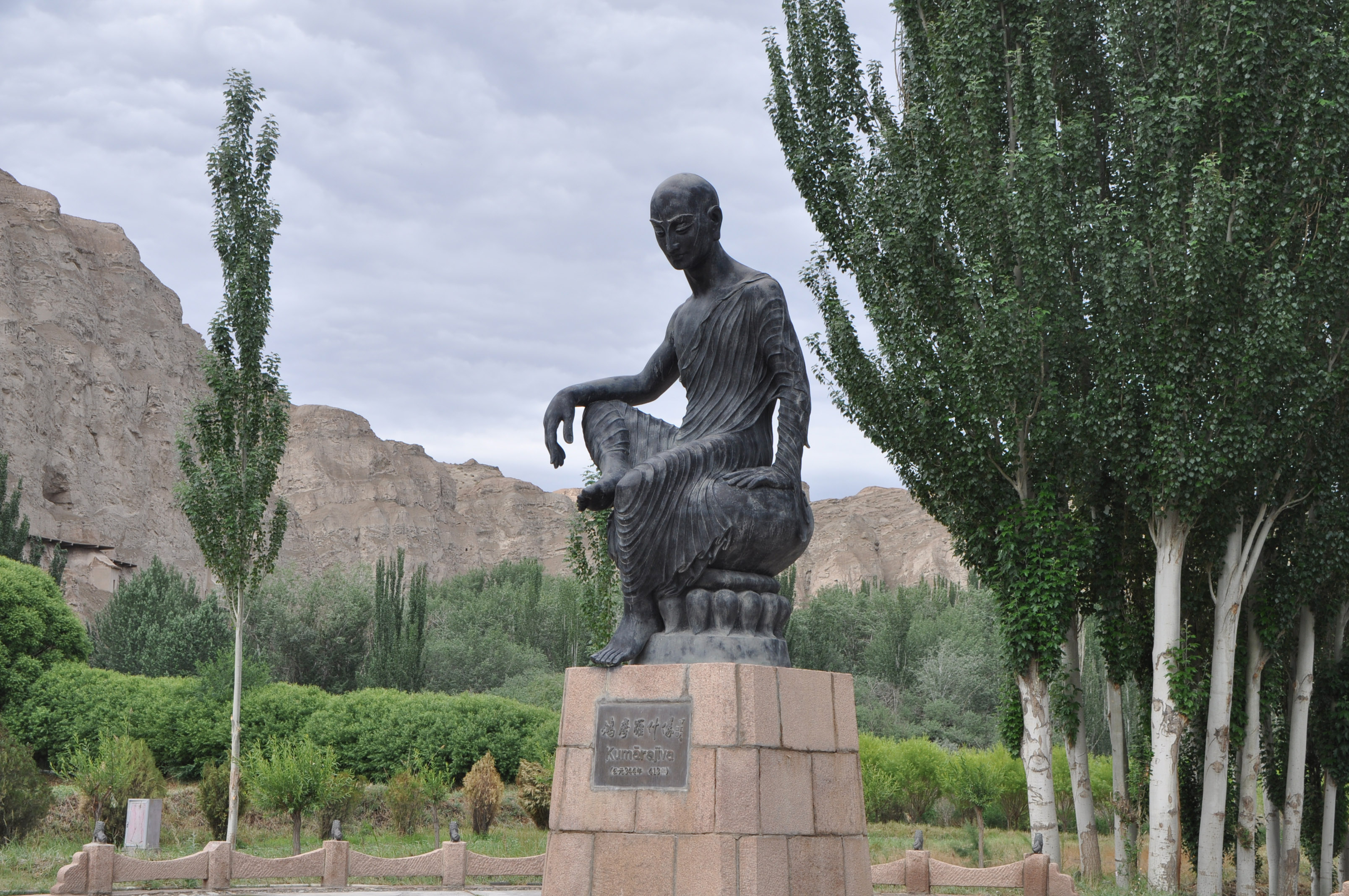|
Thus Have I Heard
''Thus have I heard'' ( pi, Evaṃ me sutaṃ, italic=yes; sa, Evaṃ mayā śrūtaṃ, italic=yes) is the common translation of the first line of the standard introduction (Pāli and sa, nidāna, italic=yes , link=no) of Buddhist discourses. This phrase serves to confirm that the discourse is coming from the Buddha himself, as a "seal of authenticity". Buddhist tradition maintains that the disciple Ānanda used the formula for the first time, as a form of personal testimony, but this is disputed by some scholars. It is also disputed how the phrase relates to the words that follow, and several theories have been developed with regard to how the text was originally intended to be read. The formula has also been used in later Mahāyāna and Vajrayāna discourses. History and function According to Buddhist tradition—based on the commentary to the Dīgha Nikāya—the formula was first used by the disciple Ānanda during the First Buddhist Council held at Rājagṛha (presen ... [...More Info...] [...Related Items...] OR: [Wikipedia] [Google] [Baidu] |
Sutra
''Sutra'' ( sa, सूत्र, translit=sūtra, translit-std=IAST, translation=string, thread)Monier Williams, ''Sanskrit English Dictionary'', Oxford University Press, Entry fo''sutra'' page 1241 in Indian literary traditions refers to an aphorism or a collection of aphorisms in the form of a manual or, more broadly, a condensed manual or text. Sutras are a genre of ancient and medieval Indian texts found in Hinduism, Buddhism and Jainism. In Hinduism, sutras are a distinct type of literary composition, a compilation of short aphoristic statements.Gavin Flood (1996), ''An Introduction to Hinduism'', Cambridge University Press, , pages 54–55 Each sutra is any short rule, like a theorem distilled into few words or syllables, around which teachings of ritual, philosophy, grammar, or any field of knowledge can be woven. The oldest sutras of Hinduism are found in the Brahmana and Aranyaka layers of the Vedas. Every school of Hindu philosophy, Vedic guides for rites of passag ... [...More Info...] [...Related Items...] OR: [Wikipedia] [Google] [Baidu] |
Jean Przyluski
Jean Przyluski (17 August 1885 – 28 October 1944) was a French linguist and scholar of religion and Buddhism of Polish descent. His interests ranged widely through the structure of the Vietnamese language, the development of Buddhist myths and legends, as well as Indo-European folk traditions such as the werewolf cult. In addition, he thought out general theories about the development of religion, which he presented in his magnum opus A masterpiece, ''magnum opus'' (), or ''chef-d’œuvre'' (; ; ) in modern use is a creation that has been given much critical praise, especially one that is considered the greatest work of a person's career or a work of outstanding creativity, ... ''L'Evolution humaine'' (1942). Bibliography Renou, Louis. "Jean Przyluski (1885-1944)". In ''École pratique des hautes études: Section des sciences historiques et philologiques'' 77 (1946): 5-7 Linguists from France 1885 births 1944 deaths 20th-century linguists French people of Pol ... [...More Info...] [...Related Items...] OR: [Wikipedia] [Google] [Baidu] |
Oskar Von Hinüber
Oskar von Hinüber (born 18 February 1939 in Hanover) is a German Indologist. He joined the German Navy after leaving high school, and holds the rank of Commander as a reservist. From 1960 to 1966 he studied at University of Tübingen, University of Erlangen–Nuremberg ,and University of Mainz, receiving his Ph.D. in 1966. From 1965 to 1981 von Hinüber served as Assistant and then Associate Professor at Mainz and from 1981 was Professor of Indology at the University of Freiburg. He retired in March 2006. Von Hinüber's special interests are Pāli, Sanskrit, and Middle Indo-Aryan languages The Middle Indo-Aryan languages (or Middle Indic languages, sometimes conflated with the Prakrits, which are a stage of Middle Indic) are a historical group of languages of the Indo-Aryan family. They are the descendants of Old Indo-Aryan (OIA; ..., the history of technology in South Asia, inscriptions of the Northwest, and manuscripts and manuscript traditions in South and Sout ... [...More Info...] [...Related Items...] OR: [Wikipedia] [Google] [Baidu] |
Avadana
Avadāna (Sanskrit; Pali cognate: '' Apadāna'') is the name given to a type of Buddhist literature correlating past lives' virtuous deeds to subsequent lives' events. Richard Salomon described them as "stories, usually narrated by the Buddha, that illustrate the workings of karma by revealing the acts of a particular individual in a previous life and the results of those actions in his or her present life." This literature includes around 600 stories in the Pāli language Apadāna ("Legends"). There are also a large number in Sanskrit collections, of which the chief are the Mahāsāṃghika's '' Mahāvastu'' ("Great Book") and the Sarvāstivāda's '' Avadānaśataka'' (''Century of Legends'') and '' Divyāvadāna'' (''The Heavenly Legend''). These latter collections include accounts relating to Gautama Buddha and the third-century BCE "righteous ruler," Ashoka. Amongst the most popular ''avadānas'' of Northern Hinayāna Buddhism are: * Ratnamālāvadāna, which is a collec ... [...More Info...] [...Related Items...] OR: [Wikipedia] [Google] [Baidu] |
Alexander Von Staël-Holstein
Alexander Wilhelm Freiherr Staël von Holstein (, January 1, 1877, in Testama manor, Governorate of Livonia, Russian EmpireMarch 16, 1937, in Peiping, Republic of China); was a Baltic German aristocrat, Russian and Estonian orientalist, sinologist, and Sanskritologist specializing in Buddhist texts. Life Related to Germaine de Staël's husband, the future baron was born in the Governorate of Livonia of the Russian Empire (present-day Estonia),in an aristocratic family (with widespread relations in other German Baltic provinces of the Russian Empire, Sweden and Northern Germany) on New Year's Day. He was educated at home during his childhood. When he reached 15, he was sent to a Gymnasium in the town of Pernau (now Pärnu). He pursued his higher education at the Dorpat University (Tartu), where some of his families had studied, majoring in comparative philology. After his graduation, he left for Germany, studying oriental languages in the Berlin University. Prussian publi ... [...More Info...] [...Related Items...] OR: [Wikipedia] [Google] [Baidu] |
Homoioteleuton
Homeoteleuton, also spelled homoeoteleuton and homoioteleuton (from the Greek ,Silva Rhetoricae (2006)Rhetorical Figures for Shakespeare and the Scriptures/ref> ''homoioteleuton'', "like ending"), is the repetition of endings in words. Homeoteleuton is also known as near rhyme.Brigham Young University (2006)./ref> History Homeoteleuton (homoioteleuton) was first identified by Aristotle in his ''Rhetoric'', where he identifies it as two lines of verse which end with words having the same ending. He uses the example of ᾦηθησαν αὐτὸν παίδιον τετοκέναι ἀλλ' αὐτοῦ αἴτιον γεγονέναι (1410a20) ''ōiēthēsan auton paidion tetokenai,'' ''all' autou aition gegonenai'' (1410a20) they thought that he was the father of a child, but that he was the cause of it (1410a20)Perseus Digital Library (2006)Aristotle, Rhetoric/ref> In Latin rhetoric and poetry homeoteleuton was a frequently used device. It was used to associate two words ... [...More Info...] [...Related Items...] OR: [Wikipedia] [Google] [Baidu] |
Alliteration
Alliteration is the conspicuous repetition of initial consonant sounds of nearby words in a phrase, often used as a literary device. A familiar example is "Peter Piper picked a peck of pickled peppers". Alliteration is used poetically in various languages around the world, including Arabic, Irish, German, Mongolian, Hungarian, American Sign Language, Somali, Finnish, Icelandic. Historical use The word ''alliteration'' comes from the Latin word ''littera'', meaning "letter of the alphabet". It was first coined in a Latin dialogue by the Italian humanist Giovanni Pontano in the 15th century. Alliteration is used in the alliterative verse of Old English, Old Norse, Old High German, Old Saxon, and Old Irish. It was an important ingredient of the Sanskrit shlokas. Alliteration was used in Old English given names. This is evidenced by the unbroken series of 9th century kings of Wessex named Æthelwulf, Æthelbald, Æthelberht, and Æthelred. These were followed in th ... [...More Info...] [...Related Items...] OR: [Wikipedia] [Google] [Baidu] |
Gautama Buddha
Siddhartha Gautama, most commonly referred to as the Buddha, was a wandering ascetic and religious teacher who lived in South Asia during the 6th or 5th century BCE and founded Buddhism. According to Buddhist tradition, he was born in Lumbini, in what is now Nepal, to royal parents of the Shakya clan, but renounced his home life to live as a wandering ascetic ( sa, śramaṇa). After leading a life of begging, asceticism, and meditation, he attained enlightenment at Bodh Gaya in what is now India. The Buddha thereafter wandered through the lower Indo-Gangetic Plain, teaching and building a monastic order. He taught a Middle Way between sensual indulgence and severe asceticism, leading to Nirvana, that is, freedom from ignorance, craving, rebirth, and suffering. His teachings are summarized in the Noble Eightfold Path, a training of the mind that includes meditation and instruction in Buddhist ethics such as right effort, mindfulness, and '' jhana''. He die ... [...More Info...] [...Related Items...] OR: [Wikipedia] [Google] [Baidu] |
Étienne Lamotte
Étienne Paul Marie Lamotte (21 November 1903 – 5 May 1983) was a Belgian priest and Professor of Greek at the Catholic University of Louvain, but was better known as an Indologist and the greatest authority on Buddhism in the West in his time. He studied under his pioneering compatriot Louis de La Vallée-Poussin and was one of the few scholars familiar with all the main Buddhist languages: Pali, Sanskrit, Chinese and Tibetan. His first published work was his PhD thesis: ''Notes sur le Bhagavad-Gita'' (Paris, Geuthner, 1929). - In 1953, he was awarded the Francqui Prize in Human Science. The Translation of Da zhi du lun He is also known for his French translation of the Mahāprajñāpāramitāupadeśa (, English: Treatise on the Great Perfection of Wisdom), a text attributed to Nāgārjuna. Lamotte thought that the text was most likely composed by an Indian bhikkhu from the Sarvastivada tradition, who later became a convert to Mahayana Buddhism. Lamotte's translation was ... [...More Info...] [...Related Items...] OR: [Wikipedia] [Google] [Baidu] |
Buddhavacana
Buddhist texts are those religious texts which belong to the Buddhist tradition. The earliest Buddhist texts were not committed to writing until some centuries after the death of Gautama Buddha. The oldest surviving Buddhist manuscripts are the Gandhāran Buddhist texts, found in Afghanistan and written in Gāndhārī, they date from the first century BCE to the third century CE. The first Buddhist texts were initially passed on orally by Buddhist monastics, but were later written down and composed as manuscripts in various Indo-Aryan languages (such as Pāli, Gāndhārī, and Buddhist Hybrid Sanskrit) and collected into various Buddhist Canons. These were then translated into other languages such as Buddhist Chinese (''fójiào hànyǔ'' 佛教漢語) and Classical Tibetan as Buddhism spread outside of India. Buddhist texts can be categorized in a number of ways. The Western terms "scripture" and "canonical" are applied to Buddhism in inconsistent ways by Weste ... [...More Info...] [...Related Items...] OR: [Wikipedia] [Google] [Baidu] |
Disciples Of The Buddha
A disciple is a follower and student of a mentor, teacher, or other figure. It can refer to: Religion * Disciple (Christianity), a student of Jesus Christ * Twelve Apostles of Jesus, sometimes called the Twelve Disciples * Seventy disciples in the Gospel of Luke * Christian Church (Disciples of Christ), a Protestant denomination in North America descended from the Campbell movement * Disciples of Christ (Campbell Movement), a Christian group that arose during the Second Great Awakening * Disciples of `Abdu'l-Bahá, 19 Western Bahá'ís * The ten principal disciples of Buddha * Disciples of Confucius * Disciples of Jesus in Islam * Student of Kriya Yoga, of direct lineage to Mahavatar Babaji * Sahabah, the disciples of Muhammad * Follower of Paramahansa Yogananda * Śishya, the disciple in the Guru–shishya tradition of Hinduism * '' Śrāvaka'' (Sanskrit) or ''savaka'' (Pali), disciples in Buddhism and Jainism * Tarmida ('disciple'), a junior priest in Mandaeism Books, games, ... [...More Info...] [...Related Items...] OR: [Wikipedia] [Google] [Baidu] |




.jpg)
